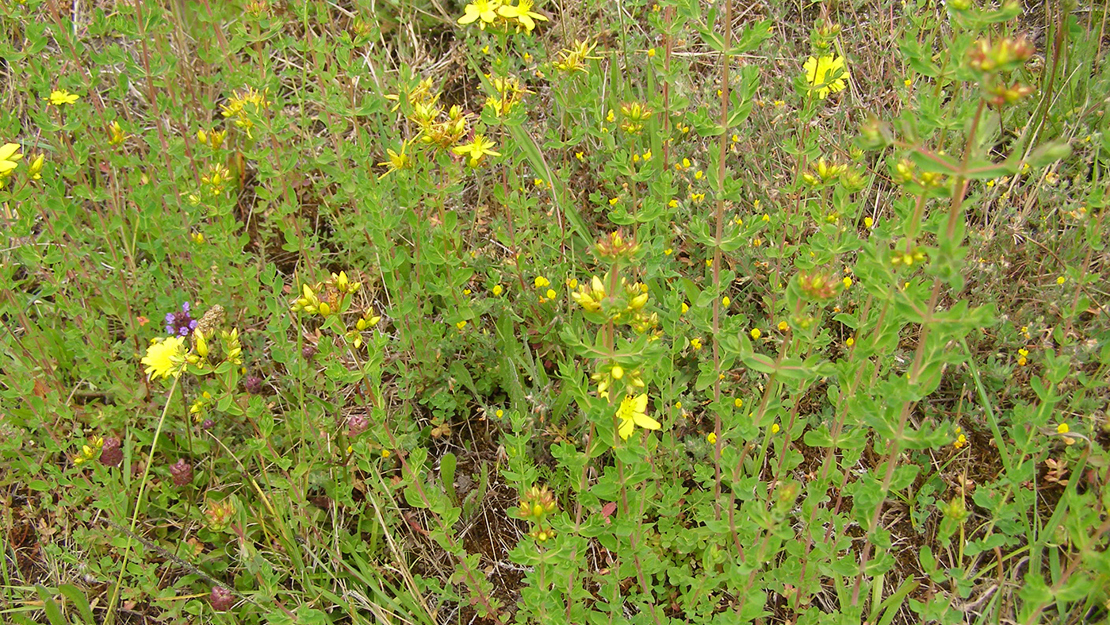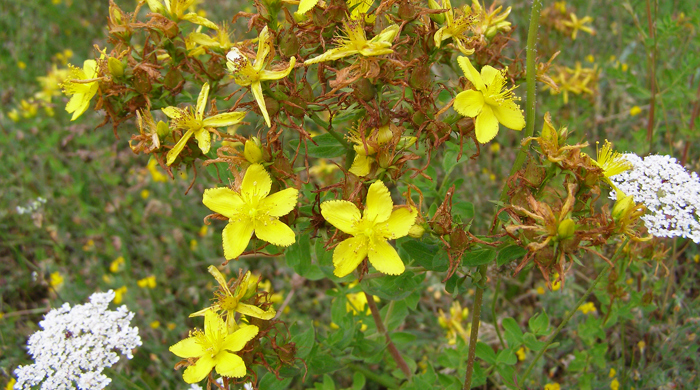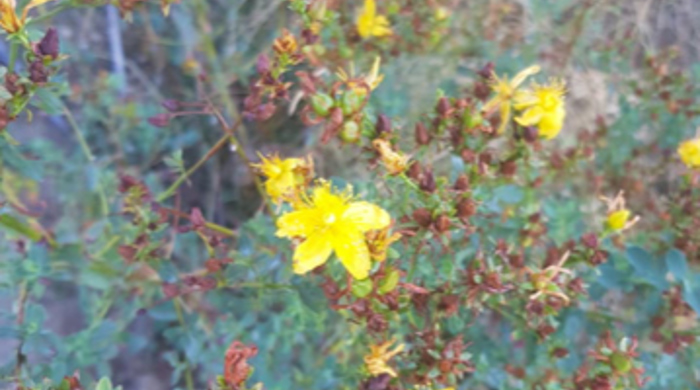Hypericum perforatum
St John's wort
Family: Clusiaceae
Origin: Eurasia, North Africa

Regional Pest Management Plan (RPMP) status
- Not a legally declared pest
General description
Erect perennial herb < 1.2 m tall. Rhizomes are slender and creeping. Stems are woody near the base, many-branched and have 2 longitudinal ridges. Leaves are opposite, stalkless and have translucent and occasionally black dots. Flowers are yellow with small black dots on the edges and are borne in terminal clusters in December – March. Fruit is a sticky capsule containing many pitted seeds and is green when young, ripening to brown.
What you need to know
Although St John’s wort is not a legally declared pest plant, it may still be invasive in some situations. Consider lower risk alternatives for your garden, such as native plants.
Habitats
Open areas, forest, riparian margins, grasslands, pasture, plantations, wasteland, roadsides.
Dispersal
Seeds dispersed by wind, water and animals. Vegetative spread from rhizomes. Human-mediated dispersal through dumping of garden waste, deliberate plantings and movement of contaminated soil, machinery and produce.
Impact on environment
Can displace native vegetation. Toxic to livestock.
Control
Site Management
Follow up treated areas 3 times per year. Encourage natural regeneration of native plants or replant treated areas where possible after 2-3 treatments to establish dense ground cover and minimise reinvasion.
Recommended approaches
Physical control
Method: Dig or pull out.
Plant parts requiring disposal: All parts.
Disposal options: Remove to greenwaste or landfill
Biocontrol
Check for the presence of agents: St John's wort beetles (Chrysolina hyperici and Chrysolina quadrigemina).
For more information about how biocontrol works, see What is biocontrol?
Community agrichemical control recommendations
Basic Growsafe certified: Foliar spray with 200ml glyphosate green per 10L of water.
Certified Handler/Experienced agrichemical user: Foliar spray with 200ml glyphosate green per 10L of water and 20ml penetrant.
Caution: When using any herbicide or pesticide please read the label thoroughly to ensure that all instructions and safety requirements are followed.





